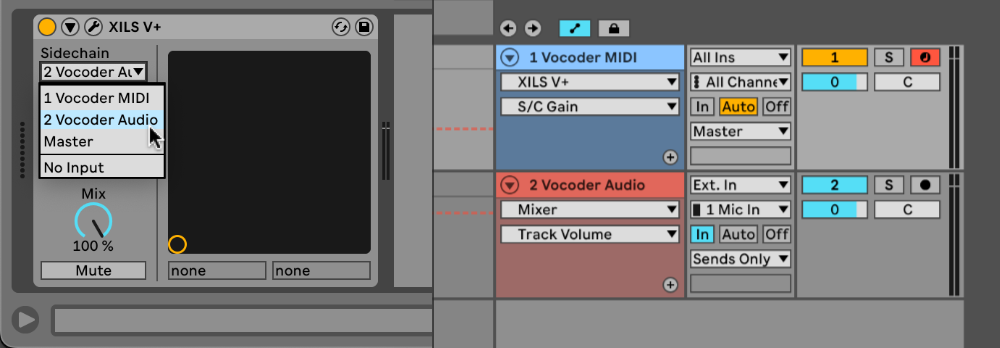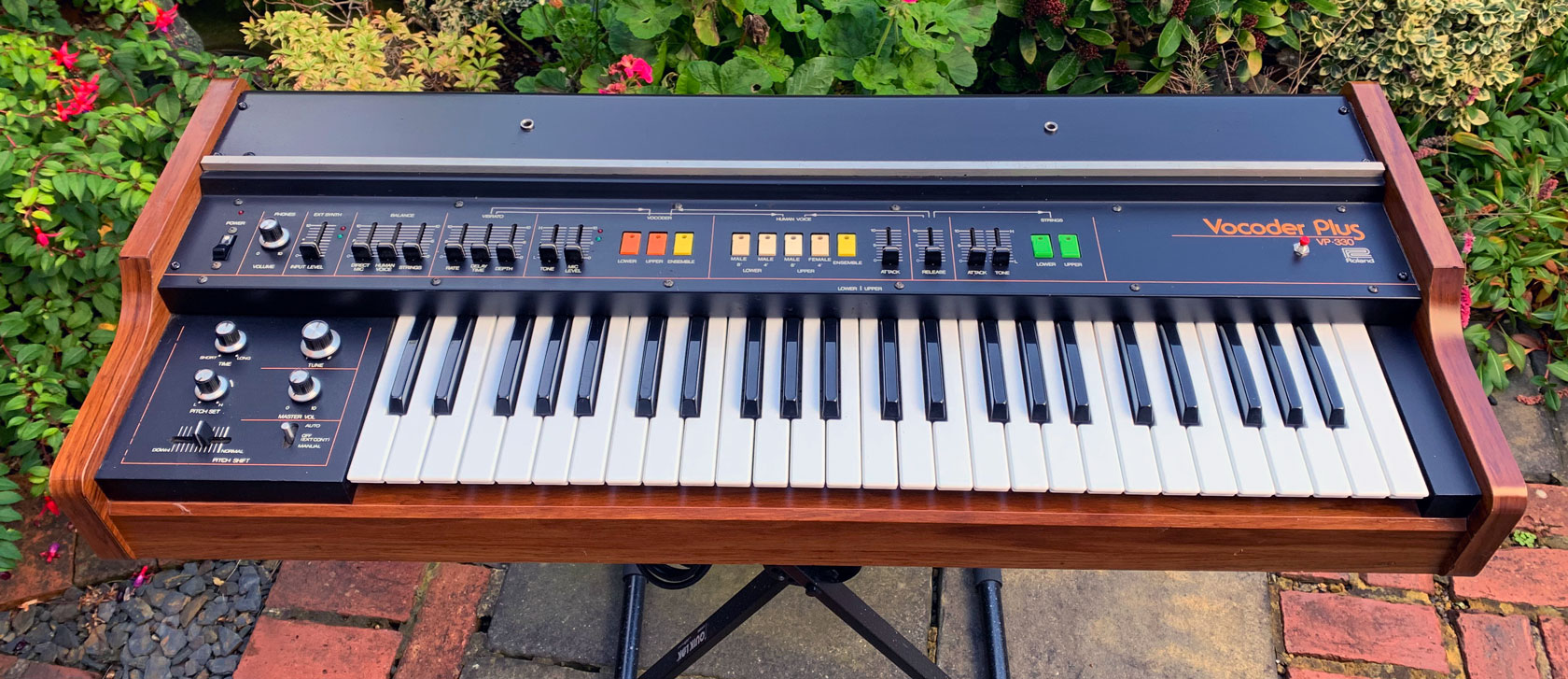5 songs that use Roland's classic VP-330 Vocoder Plus
From Stevie Wonder and Queen to Vangelis and Dua Lipa, we bring you a short musical history of this influential vocoder
The Roland VP-330, or Vocoder Plus, is one of the unsung heroes of the late '70s to early '80s synth world, being used on hits by the likes of Queen, Phil Collins, Stevie Wonder, Vangelis, and more recently, Dua Lipa.
As the name suggests, the Vocoder Plus combined a vocoder with chorused strings and a synthetic choir sound. Its recent resurgence in popularity has seen an official Roland Boutique recreation, an unofficial Behringer clone, and software emulations try to recreate its classic tones.
The VP-330 was the last and most famous of the Roland string synthesizers, a line that started in 1975 with the release of the Roland RS-101. This early string machine keyboard utilised divide-down technology, meaning that a single oscillator could have its pitch divided down to play any note on the keyboard, allowing polyphony at a much cheaper price point than traditional polyphonic synthesizers. These kinds of synths were named paraphonic.
However, all the notes had to share a single volume envelope, making string machines less expressive than truly polyphonic synths. The RS-101 featured an analogue ensemble chorus that transformed the thin, uninspiring single-oscillator sound into a lush, thick and swirling sound that gained popularity among musicians of the era.
Roland released the RS-202 in 1976 and the RS-505 in 1978, which combined the RS string sound with a monophonic bass sound and a polyphonic synthesizer. The RS-09 Organ/Strings 09, also released in 1978, was a more affordable string synthesizer combining string and organ sounds.
The VP-330 was released in 1979, and offered RS-style strings with the addition of a synthesized human voice sound, available in two registers, and an onboard ten-band vocoder. Before the VP-330, vocoders were often only found in expensive studio rack units, or they suffered from poor sound quality.
The VP-330 was relatively affordable, it retained the lush chorus sound of the RS synths, and featured a convenient built-in keyboard with XLR inputs for an easy vocoder setup. There were two versions: the Mk1 version which featured rocker switches, and the Mk2 version with updated Jupiter-8-style push-buttons.
Want all the hottest music and gear news, reviews, deals, features and more, direct to your inbox? Sign up here.
Roland released a hardware emulator of the VP-330 as part of their Boutique line, the VP-03, in 2017. Behringer gave the VP-330 their cloning treatment for their own VC340 synth.
As far as software emulations go, XILS V+ by Xils Lab is an excellent take on the original, bolstering VP-330 with additional capabilities not possible on the original hardware, such as fully polyphonic envelopes and extra sound tweaking. All the audio examples in this article were created with XILS V+.
The VP-330 was a hugely popular instrument that's been utilized by a variety of influential musicians and producers. Let's run through five songs that highlight the abilities of this beloved vocoder and string machine, and take a look at how to recreate their sounds.
1. Stevie Wonder - I Just Called To Say I Love You
The VP-330's vocoder was a hit upon release, and was used to create futuristic, robotic-sounding voices in “Radio Ga Ga” by Queen, “In The Air Tonight” by Phil Collins, and “I Just Called to Say I Love You” by Stevie Wonder.
In the first two songs, the VP-330 is used sparingly as an effect during key parts of the song; for example, in "Radio Ga Ga" you can hear it used throughout the intro before Freddie Mercury starts singing. Stevie Wonder used the VP-330’s vocoder to sing the entire last verse of “I Just Called to Say I Love You”, and also used the string sound to play the main chords of the song.
Using the vocoder in the original hardware VP-330 or the boutique VP-03 is straightforward, as both have XLR inputs and the latter comes with a gooseneck XLR microphone.
Vocoding in the software world is a little tricker. To use the vocoder in XILS V+, you need to create two tracks, an audio track with a microphone input and a MIDI track with the XILS V+ plugin loaded. You then need to route the microphone signal from the audio track to the XILS V+ plugin using the plugin sidechain menu. This will differ in various DAWs, be sure to consult your DAW manual if you are unsure.

2. Laurie Anderson - O Superman
Laurie Anderson’s “O Superman” was an unexpected hit in 1981, becoming a #2 single in the UK Charts. The art pop piece features Anderson reciting spoken word while processing her voice through the VP-330’s vocoder, which can be seen in the music video.
To create “O Superman”, Anderson utilised both the vocoder and the strings sound from the VP-330. The vocoder is heard throughout, and is simply processing Anderson’s voice while she alternates between the chords A ♭ and Cm.
The strings are slowly introduced throughout the song; they can first be heard fading in around the 30-40 second mark, and they later play the main melodic motif that the song finishes on.

3. Vangelis - Tears in Rain
Although Vangelis and his groundbreaking soundtrack for 1982's "Blade Runner" will forever be associated with the Yamaha CS-80, the Roland VP-330 was another longtime favourite of Vangelis'.
Whereas he used the CS-80 for brass, leads, basses and special effects, he relied on the VP-330 for the swirling, rich strings sound. It can be heard prominently in his song "Tears in Rain", where he plays the chords on VP-330 strings, the melody on a Fender Rhodes and the brassy swells and slides on the CS-80.
In the recreation below, I used the XILS V+ Simple Strings preset with the attack fader increased to 620ms. I also manually adjusted the tone fader as I played to simulate the dynamics of a real string section. Finally, I ran the patch through Valhalla VintageVerb to recreate Vangelis' huge Lexicon reverb effect.
4. Ozzy Osbourne - Mr. Crowley
Ozzy Osbourne's classic “Mr Crowley” utilises the VP-330's "Human Voice" sound in its dramatic, sinister introduction. The part was played by rock legend Don Airey, who told Rolling Stone that he laid down the intro in just half an hour.
Airey also revealed in a 1984 interview with Electronics & Music Maker that his synth setup consisted of a Yamaha CS-80, which was his main keyboard, the Roland Vocoder Plus, a Minimoog, a Yamaha CF70, an Oberheim OBXa, and a MemoryMoog. Quite a setup!
Airey likely used the CS-80 to play the “Mr Crowley” chords and the Minimoog to play the melodic bassline underneath it. On the second repeat, the CS-80 chords are doubled with the VP-330 choir.
Although it's low in the mix, it sounds like Airey was using both the Male and Female voice switches with the ensemble effect. The recreation below uses the XILS V+ plugin accompanied by Arturia CS-80 V and Mini V for chords and bass.
5. Dua Lipa - Levitating
The VP-330 recently re-emerged in modern pop music, playing the main chords sound in Dua Lipa's mega-hit "Levitating".
The song's producer, Koz, revealed on the Song Exploder podcast that the "Levitating" chords were the first thing he played when he bought his VP-330, and praised its simplicity, saying "you don't want a keyboard that does a hundred things. You want one that does just a couple of things really well, and it just has a vibe and a sound".
The “Levitating" patch uses the human voices sound with the ensemble effect and portamento to make the pitch glide to each new chord.
To recreate the settings in XILS V+, start with Male 8 Ensemble preset and increase the “release” slider, which will increase the time it takes the sound to fade out. Switch the portamento mode to “glide” and decrease the time setting to 26ms; this will cause notes to smoothly glide at the start of each chord. Finally, raise the vibrato depth knob to introduce some detuned pitch modulation.


Dan Carr is a Glasgow-based musician, sound designer and writer, and the man behind the website Reverb Machine, where he shares synth programming guides, painstaking recreations of songs and custom synthesizer presets. He started as a guitarist and bass player before discovering synthesizers and electronic production around 2015.
